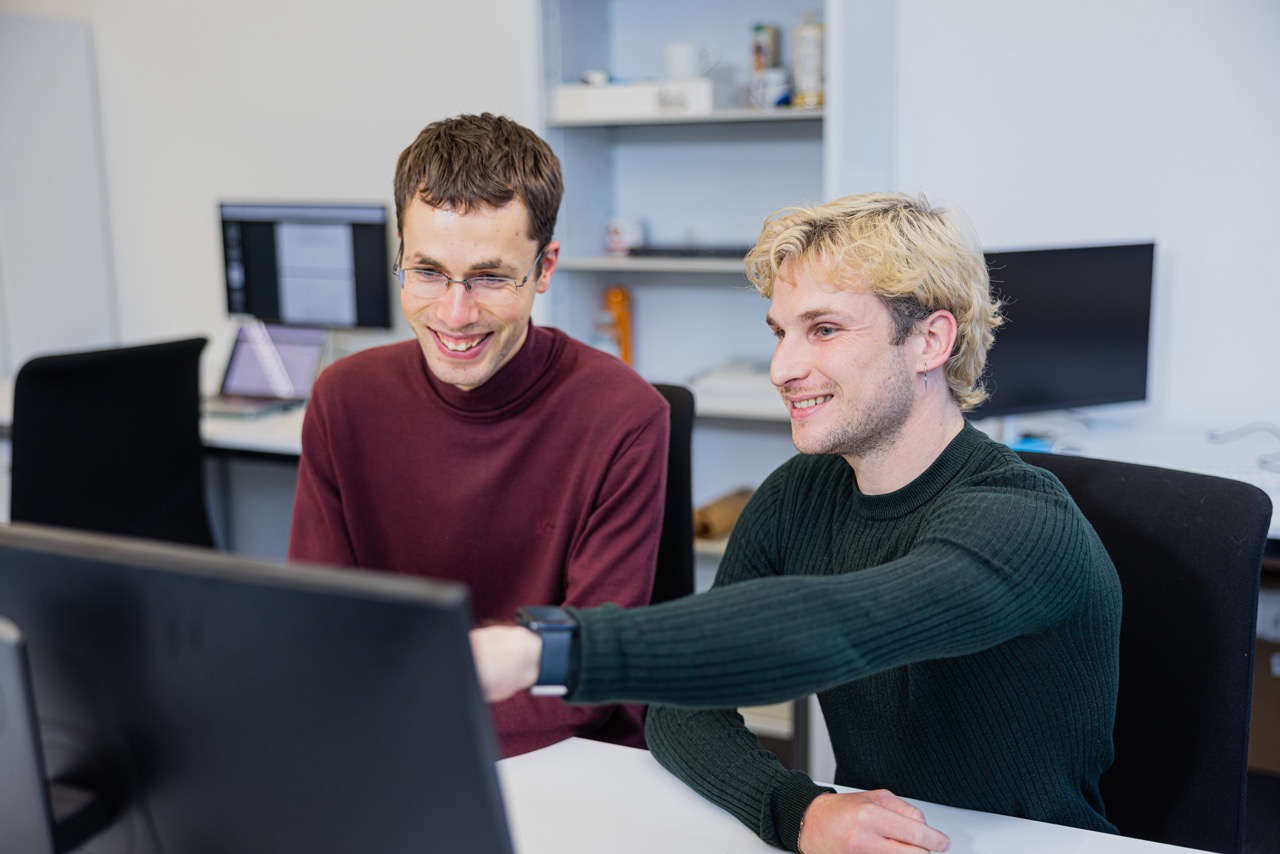Navigation auf uzh.ch
Navigation auf uzh.ch

In our lab we regularly have students that are working on projects or theses with us. There are multiple ways of how you can join our lab as a student. Please see the list below to check out how you can join depending on the project type!
We get many emails and requests. It is not possible to consider everything, especially if emails are messy and important information is missing.
We regularly have open positions for research / student assistants. Assistants help us, for example, to collect data in our lab, complete small tasks for our various projects (e.g., implement web forms for participants to fill in) and other tasks that are related to our daily research life.
If there is no position announced (e.g., via the CL list) you can always express your interest in joining our lab as a research / student assistant by contacting Prof. Dr. Lena A. Jäger.
Make sure to include the following information in your email:
Some university curricula include modules where students have to work on individual projects (e.g., programming projects in Computational Linguistics). If you would like to complete your project in our group, contact Prof. Dr. Lena A. Jäger.
Please include the following information in your email:
We are happy to see that you are interested in writing your thesis with us! Please note that the list of open thesis projects on this page is not exhaustive. We also encourage you to approach us with your own research idea. You can find out more about our current interests in the publication or the research section.
Please get in touch with Prof. Dr. Lena A. Jäger in case you are interested in doing your thesis with us.
| Project Title | Research Question | Data | Methods |
|---|---|---|---|
| Comparing human and machine surprisal | How do surprisal values, extracted from large language models, predict different measures of human surprisal in language comprehension (or production)? | Eye-tracking-while reading data, self-paced-reading data | state-of-the-art language models, hierarchical linear mixed models |
| Predicting text comprehension from eye movements in reading | Predicting text comprehension from eye movements in reading. | Eye-tracking-while reading data with reading comprehension scores will be provided. | Machine Learning (neural sequence models or other methods); challenge: combining language modeling of the stimulus text with eye movement data |
| The impact of cognitive states on sentence processing | How are the cognitive mechanisms that underlie sentence processing affected by temporal cognitive conditions such as sleepiness or alcoholization? | Eye-tracking-while reading data will be provided. | Psycholinguistic statistical analysis of eye-tracking data |
| Detection of mental and physical fatigue from eye movements in reading | Detection of mental and physical fatigue from eye movements in reading | Eye-tracking-while reading data with a range of labels that quantify sleepiness/vigilance will be provided. | Machine Learning (neural sequence models or other methods); challenge: combining language modeling of the stimulus text with eye movement data |
| Detection of alcoholization from eye movements in reading | Detection of alcoholization from eye movements in reading |
Eye-tracking-while reading data labelled the reader's with breath alcohol level will be provided.
|
Machine Learning (neural sequence models or other methods); challenge: combining language modeling of the stimulus text with eye movement data |
| Personality classification from eye movements in reading | Personality (big 5) classification from eye movements in reading |
Eye-tracking-while reading data labelled with psychometric personality scores
|
Machine Learning (neural sequence models or other methods); challenge: combining language modeling of the stimulus text with eye movement data |
| Methodological comparison between eye-tracking and self-paced reading for psycholinguistic research | Methodological comparison between eye-tracking and self-paced reading for psycholinguistic research in sentence processing | Self-paced-reading and eye-tracking data will be provided | Psycholinguistic statistical data analysis |
| Investigating the implications of the animacy hierarchy in German | Investigating the implications of the animacy hierarchy in German | Self-paced reading data to be collected | Self-paced reading data collection and psycholinguistic statistical data analysis |
| Predicting programming skills from eye movements in code reading | Inference of coding skills / code comprehension level from eye movements in code reading | Eye-tracking data to be collected | Machine Learning (e.g. neural sequence models) |
| Deep neural feature representation of eye-tracking data | Developing deep neural feature representations of eye-tracking-while-reading data | Various eye-tracking-while-reading data sets will be provided | Machine Learning (e.g. CNN, sequence models) |
| Inferring subjective vs. objective text difficulty from eye movements in reading | Can we estimate objective text difficulty from eye movements in reading using subjective judgements as labels? | https://github.com/ahnchive/SB-SAT/ | Psycholinguistic statistical analysis and/or Machine Learning Methods (e.g. neural sequence models) |
| Predicting foreign language proficiency from eye movements in reading | Inference of foreign language proficiency from eye movements in reading | Eye-tracking-while-reading data sets will be provided | Machine Learning (e.g. neural sequence models) |